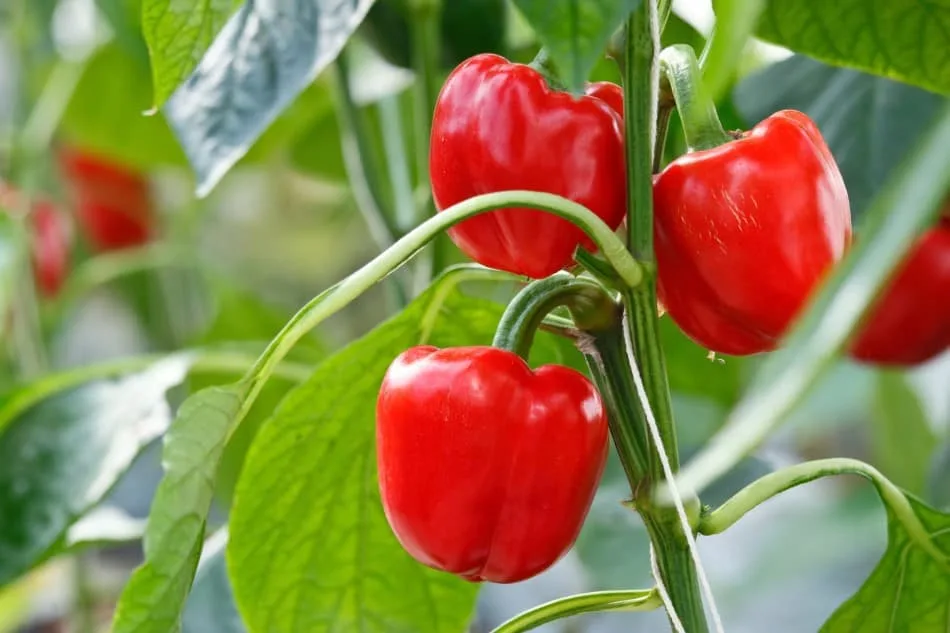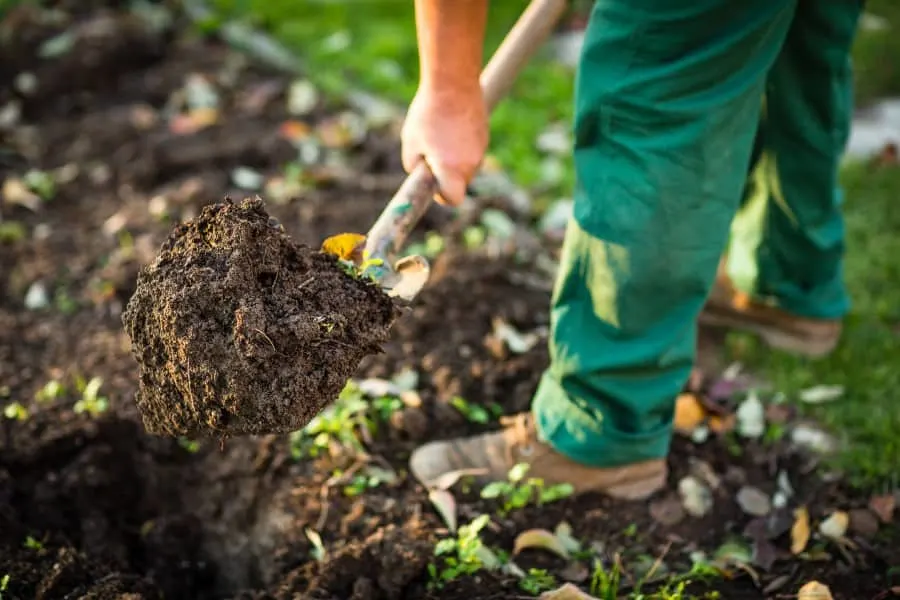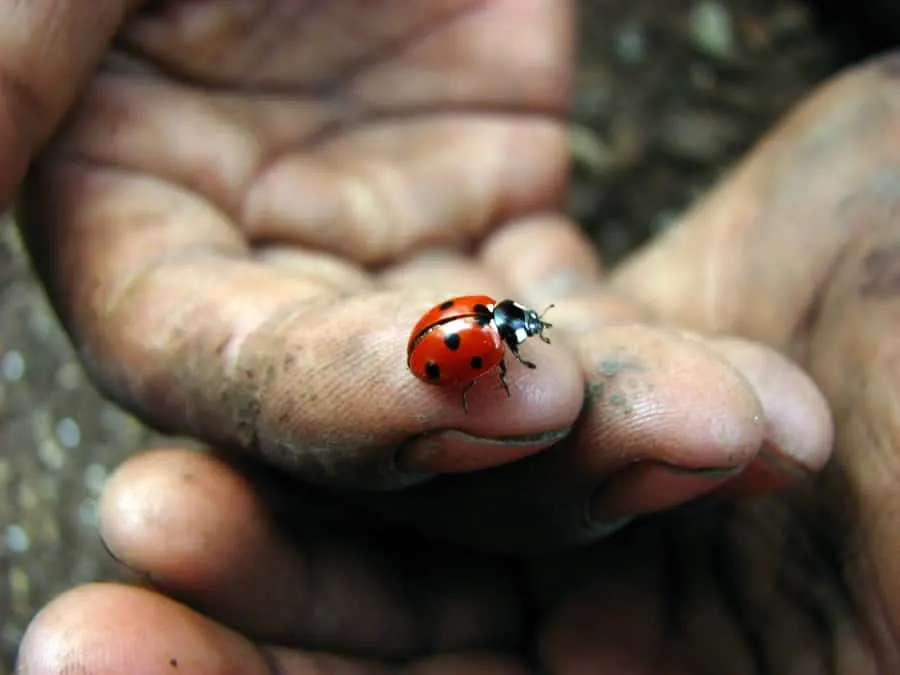After taking the time to cultivate and grow a pepper plant, it can be frustrating to see leaves falling off. Knowing why this is happening can hopefully help to save your plant, prevent future issues, and produce healthy peppers.
The main reasons the leaves are falling off your pepper plant are temperature fluctuations, inadequate soil drainage, low nutrients, pests, or disease. It is crucial to monitor your plants for signs of a problem, such as yellowing leaves, and take care of it before it damages your plant past repair.
This article will explore some common causes of falling leaves in pepper plants and the best ways to address each problem.

The Healthy Pepper Plant
The pepper plant is not terribly sensitive, but it does thrive with certain requirements such as full sun, well-drained soil, and temperatures consistently over 60 degrees Fahrenheit (16 degrees Celsius). To ensure you have the healthiest pepper plant, here are a few things to keep in mind:
- Grow your plants in a greenhouse or outdoors if the temperature is warm enough: 65–70 degrees Fahrenheit (18–21 degrees Celsius)
- Plant in a large container with good quality potting soil
- Prune your plants to encourage new shoots
- Stake plants that will grow larger, such as bell peppers
- Water regularly and feed with liquid fertilizer after the first fruits have set
7 Common Causes of Fallen Leaves in Pepper Plants
Leaves can tell us a lot about the health of a plant. They are an indicator of whether a plant is well fed or overwatered, and healthy leaves tend to be big and green, without blemishes or spots on their surface. If you notice anything that does not look quite right, it is better to address the issue as soon as possible to avoid larger problems.
There are a few reasons as to why the leaves are falling off your pepper plant. They include but are not limited to:
- A problem with the growing environment
- Too much or too little fertilizer
- Pests
- Some plant disease that has infected the root
There is only one kind of leaf drop that is considered normal: low leaves will often drop to make room for new shoots. As the newer shoots grow, the lower leaves will receive less light and slowly turn yellow and drop. This is a normal cycle through which the plant will flow through and is not a cause for alarm.
Improper Growing Environment
As mentioned above, pepper plants require a sunny, warm location and soil with good drainage. Pepper plants may display leaf drop if they are over or under-watered, not getting enough nutrients, planted in the wrong kind of soil, or exposed to a sudden drop in temperature.
Solution
Be sure to research the best locations for your pepper plants, along with how best to cultivate and space the plants once they are moved outside. Work with the right kind of soil, and always start by giving the plant plenty of room to grow in a spot with lots of sunlight. We’ll cover each issue and solutions below.
Temperature Fluctuations
Peppers should be planted in the spring and will thrive during the warm summer months. Whether growing in a greenhouse or outside, any sudden or frequent drops in temperature can lead to stress within the plant that can cause leaves to fall. Even in warmer climates, night-time temperatures can drop dramatically, significantly affecting the plant and its growth.
Solution
Pepper plants are best planted in full sun, where they can soak up as much heat as possible. Another option is to lay black plastic between the plants to allow the heat to be absorbed, keeping the plants warm.
If the plants are in pots, you can prevent night-time temperature drops by bringing them inside or by using heaters. The ideal temperatures for pepper plants ranges between 65–70 degrees Fahrenheit (18–21 degrees Celsius).

Soil Type
All plants get most of their nutrients from the soil. As they grow, their roots will spread into the ground, seeking out food to stay healthy. If there is a lack of nutrients in the soil, the plant will wane, stop growing, and the leaves will yellow and fall off. This will also prevent pepper plants from bearing fruit.
Solution
To ensure a healthy plant, start with nutrient-rich soil. Use fresh dirt, rather than recycling from an older plant, which will have used up any nutrients, and add fertilizer to promote growth. When re-planting, change 60-70 percent of the soil with fresh soil and be sure to fertilize once the fruit has set. The ideal soil for pepper plants is a loamy soil that is has a neutral pH level of six to eight, and a good amount of nitrogen to encourage pepper growth.
Watering
Unfortunately, both overwatering and underwatering can cause the leaves to fall off your pepper plant. Mature plants typically require watering a couple of times per week. However, in hotter climates, an underwatered plant’s leaves will wilt and curl.
It is not unusual to see overwatered plants begin to lose their leaves and eventually die. This is due to root rot from oversaturation.
Solution
The best way to tell if your pepper plants need watering is to stick a finger into the soil. The top should not be dry, but you should be able to feel moisture when your finger penetrates the top layer of soil. If it is moist, the plant does not need watering. If the soil feels dry a couple of centimeters under the top layer, the plants need to be watered.
Be sure to keep any plates under plant pots free from water so that you don’t let the plant sit in a pool of water. Apply a layer of mulch over the soil if the plant appears to dry out too quickly. This will prevent too much evaporation in warmer climates.
Fertilizer Issues
Your pepper plants might be losing leaves if they are not getting enough nutrients. Over-fertilization, however, can also be a problem and could cause the roots to burn in the soil. Although nutrient-rich soil is a good start, additional actions need to be taken throughout the plant’s life cycle to ensure proper growth.
Solution
Before adding fertilizer to any plant, start by checking the pH or acidity levels as well as the nutrient levels of the soil, so you know what you are dealing with. This will help you determine what levels of nitrogen, phosphorous, and potassium you will need that not only get your plant what it needs, but without making the soil too acidic or alkaline.
Pepper plants need a good amount of Nitrogen in the beginning stages of their lives to produce beautiful strong foliage and blooms. But, having too much Nitrogen in the later stages could lead to a stunning plant, but little to no pepper production.
That is where the Phosphorus and Potassium come into play. Once your pepper plants are starting to look good and healthy, you can then switch to a fertilizer with a higher amount of Phosphorus and Potassium than nitrogen.
If you don’t have the time or patience to rotate your pepper plant fertilizer based on its stage of growth, it’s best to use a fertilizer that is a 5-10-10, which means it contains half as much as nitrogen as it does phosphate and potassium. This is the perfect combination to encourage your plant to grow, while helping to produce healthy fruits.

Pests
Pests are a common cause of dropping leaves in many plants. Aphids are very common and will suck the juices from the pepper plant’s leaves. In drying out the leaves, these tiny insects leave them vulnerable to fungal infections and mold. Aphids can be found on the underside of leaves and may be white, black, or green.
Solution
Check your plants often for any signs of bugs or pests, which can include tiny holes or spots on the leaves. If pests are present, they can usually be dealt with by spraying insecticidal soap onto the leaves or by spraying on an organic pesticide which you can make at home using salt, pepper, garlic, or mineral oils. You can also discourage pests from moving between plants by ensuring there is enough space between plants. Be sure to check out our comprehensive post on best organic methods of pesticide for your plants.
Plant Diseases
Fungal and bacterial diseases are not uncommon among plants and can lead to leaves dropping. Black or brown spots on the leaves are signs of a bacterial infection, where yellowing leaves are an indicator of a fungal infection.
Solution
Always plant your pepper plants with enough room for them to grow. This will help in irrigation and with sun exposure. Fungal infections are typically present in over-watered plants and can be prevented by checking the soil’s moisture levels before watering.
Bacterial infections can spread from one plant to another, and it is best to remove and destroy the affected plant. Bacterial infections can come from cuts in the leaves or infected sources within the soil. It is not possible to save a plant once a bacterial infection has taken root and the only course is to remove the plant to save those surrounding it.
Closing Thoughts
Leaves can fall off a pepper plant due to nutrient deficiencies, improper watering, pest infestation, diseases, and sudden temperature drops. To avoid these issues, be sure to monitor your plants, checking the leaves for any signs of distress.
Water imbalances can be identified within the soil and on the leaves as they curl and die. Pests are typically visible on the leaves’ surface and are easy to handle with the right pesticides. If you see no pests and the plant is getting adequate water, it is likely an issue with the soil’s nutrients.
Here are Some of my Favorite Gardening Products and Tools
Thank you for reading this article. I hope you found it helpful for growing some new plants in your home or garden. Here are some products I like that I hope you’ll also find helpful. These are affiliate links, and I am compensated for referring traffic. But in all honesty, these are the exact product that I use or recommend to everyone.
Soil: For high-quality soil, I really like Fox Farm Ocean Forest. I do all my growing in containers and this soil has worked great for me. I like how they use nutrient-rich contents like earthworm castings, bat guano, and composted crab and fish.
Fertilizer: Currently I am using a seaweed-based organic fertilizer call Neptunes Harvest. This is a great milder fertilizer option if you want to use something organic. If you want a more powerful fertilizer, I recommend Fox Farm Liquid Nutrient Trio, lots of people have had great growing success with this product.
Pruning Shears: Pruning shears are one of the most useful gardening tools to have because it’s important to prune your plants to keep them healthy. The pruning shears I recommend are the Gonicc 8’’ pruning shears. I like them because they are built sturdy and work both on bigger and smaller plants, so you don’t need to have multiple pruning shears.
spicytrio.com is a participant in the Amazon Services LLC Associates Program, an affiliate advertising program designed to provide a means for sites to earn advertising fees by advertising and linking to Amazon.com. spicytrio.com also participates in affiliate programs with other sites. spicytrio.com is compensated for referring traffic and business to these companies.
